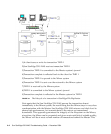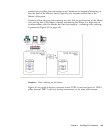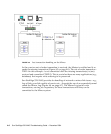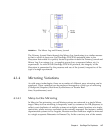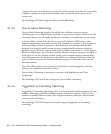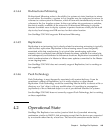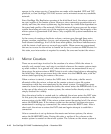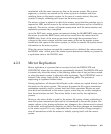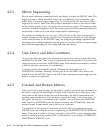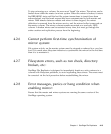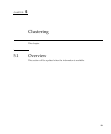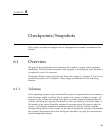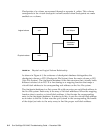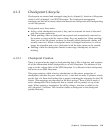
4-12 Sun StorEdge 5310 NAS Troubleshooting Guide • December 2004
4.2.3 Mirror Sequencing
Once a mirror has been created and fully replicated, it enters the INSYNC state. The
mirror volume is finally mounted, read-only, and declared to be of partition type
NBD. Then, the mirror begins sequencing. It is at this point that the mirror buffer
begins to be actively used. Each file system transaction written to the mirror buffer
on the master system is sent, or sequenced, to the mirror system. The master system
waits for an acknowledgement from the mirror system that the transaction has been
successfully written to its own mirror buffer before discarding it.
The mirror is considered to be "in sync", and will stay in this state, as long as file
system changes on the master volume do not outpace the transfer of those changes
to the mirror system. In the INSYNC state, the progress percentage represents the
percentage of available transaction storage space in the mirror buffer; this percentage
may fluctuate depending on disk usage and network latency.
4.2.4 Link Down and Idle Conditions
At any point after the connection between the master and mirror systems has been
established in the INIT state, a loss of communication between the two systems will
cause the mirror to enter the LINKDOWN state. Data transfer from master to mirror
is halted until the connection is re-established.
A mirror can also be manually paused, effecting the same behavior as a
LINKDOWN condition. Pausing a mirror puts it into the IDLE state, and is only
possible from the INSYNC state. In the IDLE state, transaction sequencing from the
master to mirror is suspended.
4.2.5 Cracked and Broken Mirrors
If the rate of file system changes on the master volume exceeds the rate of transfer to
the mirror volume, the percentage will drop until it reaches zero. Once there is no
more room in the mirror buffer for new transactions, the oldest transactions still
pending acknowledgement from the mirror system will start to be overwritten. At
this point, the mirror is considered to be "cracked", and will enter the CRACKED
state. From the CRACKED state, the mirror reverts to the OUTOFSYNC state, the
mirror volume is unmounted, and a full re-sync is started.
It is possible for the mirror to crack both when the mirror is sequencing, in the
INSYNC state, and when the mirror is replicating, in the REPLICATE/OUTOFSYNC
states. If the mirror buffer is not large enough to store all file system changes made
before it finishes syncing to the mirror, it will continue in an endless OUTOFSYNC-
CRACKED-OUTOFSYNC cycle.



